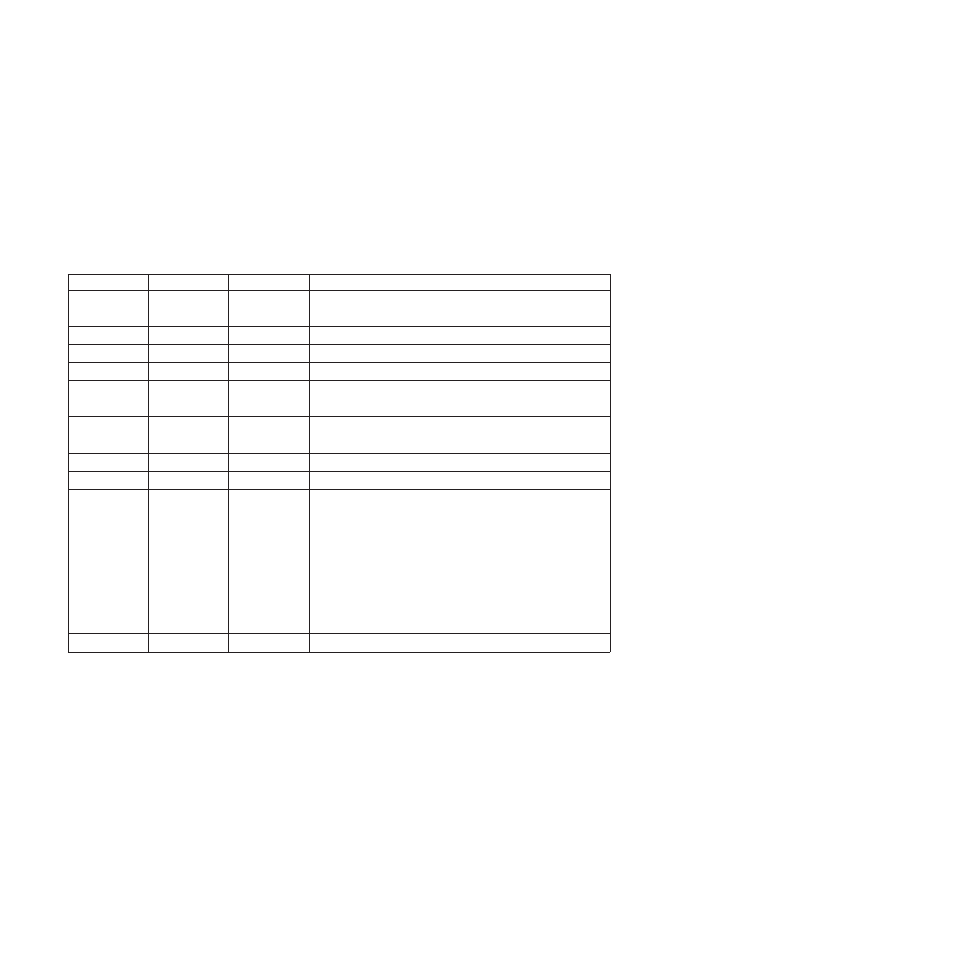Compuprint 4247-Z03 Programmer Manual User Manual
Page 128

of the page segment add to the font equivalence tables during the include page segment process up to a
maximum of 20 loaded font ID/print quality combinations.
Each Begin Overlay command starts the overlay with the loaded font IDs currently defined and will add its
LFE entries during the overlay’s definition up to a maximum of 20 loaded font ID/print quality combinations
total. On a logical page, the sum of each included overlay’s number of loaded font ID/print quality
combinations (whether included through Include Overlay or through Load Copy Control commands) added
to the number of loaded font ID/print quality combinations on the logical page cannot exceed 58.
Each font equivalence entry is 16 bytes, in the following format:
Decimal
Hex
Value
Description
0
0
00-FE
Local Font ID
FF
Reserved (4248 mode) (See Note 4)
1-2
1-2
0001 - 7EFF
Font Host Assigned ID (See Note 3)
3-4
3-4
Font Inline Sequence (Ignored)
5-6
5-6
0000
Reserved
7-8
7-8
XXXX
Code Page ID (See Code Page ID Chart)
FFFF
Use the Printer Defined Default Code Page ID
9-10
9-A
XXXX
Font (Style) ID (See Font ID Chart)
FFFF
Use the Printer Defined Default Font
11-12
B-C
0000
Reserved
13
D
00
Reserved
14
E
Font Attributes
Bit 0
Font Is Present in Printer (See Notes 1 and 2)
Bit 1-2
Reserved
Bit 3
Double High (See Notes 5 and 6)
Bit 4
Italicized Print (See Note 6)
Bit 5
Double Strike
Bit 6
Bold
Bit 7
Double Wide
15
F
00
Reserved (See Note 2)
Notes:
1. If the Font Present in Printer bit is on, this indicates to the printer that the font has previously been
downloaded or is permanently resident. If this bit is off, this indicates to the printer that the font is not
present in the printer and will, presumably, be downloaded (by an LSS command) prior to selection for
printing.
2. Additional font equivalence entries, each 16 bytes long, can follow this entry, using the same format.
No more than 20 different loaded font ID/print quality combinations can be active at a given time.
3. Use the same Loaded Font ID when using the same Font ID and Code Page ID for several Local IDs.
This saves storage space and font allocation time in the printer.
4. Local ID byte 0 may use any value 1 to FE. A value of FF is supported if the printer is in 4224
Emulation Mode for compatibility, but is not recommended. See “Set Character Set” on page 167,
“Logical Page Descriptor (LPD)” on page 111, and “Printer Initialization and Preparation Sequence” on
page 93 for more information regarding Local IDs equal to FF.
5. A double high font can be printed only on a page that is unordered. See “Logical Page Descriptor
(LPD)” on page 111 for more information.
108
Programmer Manual
